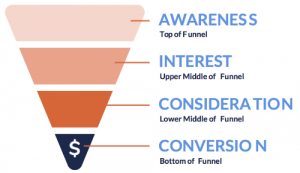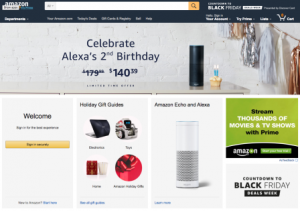One of the most powerful capabilities of digital marketing is the ability to effectively identify and target audiences with relevant and engaging messaging. Marketers have learned to leverage this ability to create highly effective campaigns that drive engagement, response, and conversions.
However, there’s a lot that goes into developing an effective audience targeting program. One of the challenges is simply finding the best ways to create a set of target audiences. Certainly, there are some tactics that are relatively straightforward. If a consumer has shown interest in a product by visiting a web page, clicking on a related link, etc. You can likely conclude that they may be considering buying the product and are open to receiving marketing messaging related to their interest. However, identifying and then creating an audience within your email or other digital marketing program isn’t always as straightforward as identifying an action or demographic attribute that makes a user identifiable and then adding them to a list for marketing. Sometimes, the easiest way to create an audience, or at least one component of the process involves identifying contacts who you don’t want to include in a campaign.
When this is the case, the most effective approach may not be selecting an audience to target, but suppressing certain members of your audience. This all falls under the umbrella of suppression list management. Email and SMS marketing are two marketing channels that have been making use of suppression lists for many years, both for compliance reasons and for more effective audience targeting. Below are a few examples of how suppression list management can be used to more effectively target audiences.
Opt-Outs
In the Email and SMS channels, marketers have long been familiar with suppressing recipients who opt-out from receiving future messaging. With various regulatory and legal developments in the past few years, this is now a group that marketers focused on other channels have become familiar with as well.
Even beyond the legal requirements of ceasing marketing to individuals who have opted out, there is logic in not promoting your products and services to people who simply don’t want to hear from you anymore. In most digital marketing channels, the incremental cost of delivering one more message (email, text message, display ad, etc.) is often nominal or virtually zero. Over the years, this has led to some marketers adopting a philosophy of not dialing in their audience targeting as tightly as possible. However, there is little reason to continue marketing to people who have taken the action of indicating their disinterest by opting out. Even if it weren’t a legal requirement to remove them from your email, SMS or other types of campaigns, it makes good sense to do so from a business perspective.
Current Customers
If your campaign is focused on generating new sales (i.e. not repeat business from past customers) then suppressing all current customers from our acquisition efforts is a must. But, there are various specific use-cases for suppressing customers. Here are two common situations where you might not want to send a campaign to current customers.
- Many industries use free trials, steep discounts, or other special offers to attract new customers. One thing these offers typically have in common is that they are not available to current customers. When current customers run across the offers, they often become frustrated that they can’t take advantage of the special deals. One great example is just about any subscription service, where current customers may discover that brand new customers are paying significantly less for the service. At a minimum, this leads to annoyance and can lead to real anger and customer satisfaction. They may start calling customer service to vent their frustrations or even cancel their subscriptions. So, it can be a real benefit to take reasonable steps to make it less likely that current customers will see those special acquisition offers.
- Advertisers that use affiliates or other third-parties to promote their products and services are also typically interested in suppressing current customers from the marketing campaigns of their marketing partners. The reason being that they may end up paying an affiliate for re-converting a current customer. Many advertisers prefer to handle marketing to current or even past customers themselves and have their affiliates focus entirely on brand new prospective customers.
Non-Responders
Many types of digital marketing are relatively inexpensive when evaluated on the cost to market to an individual member of your audience. Email is a great example where the incremental cost of adding one more address to your campaign is almost non-existent. Because of this fact, early email marketers often focused on building the biggest list possible. This was predicated on the idea that the more recipients on your list, the more sales you will generate and if mailing to another 1,000 or 10,000 (or more) recipients won’t really add that much to the cost of the campaign, then just mail to as many people as possible every time. There is some logic to that approach, but as the email channel has matured and reaching recipient inboxes has become more challenging, email marketers have begun to reassess this ‘more is better’ philosophy and have come around to the benefits of better audience targeting.
With that in mind, marketers have been looking for groups they may want to suppress from mailings. After Opt-Outs, another common group are non-responders (sometimes called high-frequency non-responders). Typically, this group would include individuals who have received multiple marketing campaigns over a period of time and have never responded. Every marketer will set up their own specific definitions (how many campaigns, how long a period of time, what constitutes a response, etc.), but the general approach is similar. The goal is to remove people who are highly unlikely to ever respond to a campaign since they have failed to do so in the past.
These are just three of many ways that suppression list management can be used in your overall audience targeting program. It really just takes a little creative thinking to identify additional ways to use suppression more strategically in your campaigns.
Digital & Social Articles on Business 2 Community
(18)







